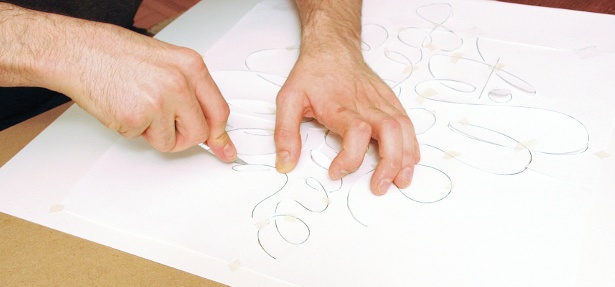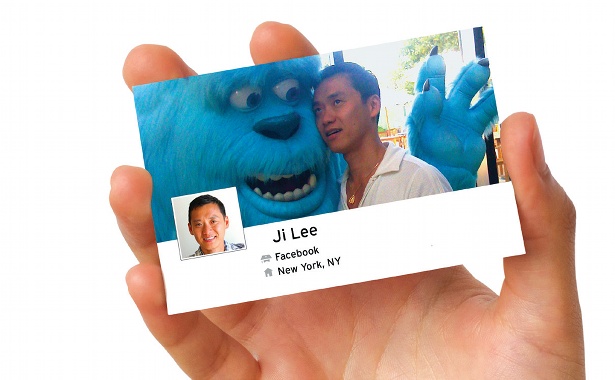Trent Walton on the need for healthy argument
Designer, speaker and one third of Paravel, Trent Walton chats with Martin Cooper about how to survive amid a fast-moving industry
This article first appeared in issue 242 of .net magazine – the world's best-selling magazine for web designers and developers.
South by Southwest (SXSW) dominates Austin, Texas in the United States. And it does so completely. Bars are taken over by internet giants, throwing noisy private parties. Buses are festooned with the logos of the latest and bravest tech startups. Not even the city’s lampposts are safe; everyone is wrapped in a jarring coat of garish flyers for talks, meet-ups, demos and parties.
Of course, it’s likely Austin’s transformation into an industry billboard goes largely unnoticed. Everyone in town has a smartphone and gazes at it unwaveringly as they walk, head down. How Austin isn’t the car accident capital of world is a mystery (unless everyone is tuned into an app designed to detect approaching automobiles).
Against this frantic, coffee-swilling and bandwidth-addicted backdrop we find Trent Walton – looking at his phone – in the shadowy and cool lobby of the Radisson Hotel.

Grey-haired, filmically handsome and relaxed, he speaks quickly with a subtle Texan drawl. “I guess you could call me a web designer,” he says, “I’m founder and one third of Paravel, but that seems too formal. I’m a web designer with the two friends I’ve had since high school.”
Rather than occupying a glitzy office equipped with a pool table, Segways and crammed with lots of soft furnishings, Paravel is rather placeless. Each of the three members – Dave Rupert, Reagan Ray and Trent Walton – work from home.
Shunning the traditional monolithic agency approach and opting instead for something that feels more like a collective, certainly hasn’t hurt Paravel’s fortunes. The agency was the creative and technical force behind Microsoft’s responsive homepage redesign.
Right place, right time
In a move catalysed by the arrival of Windows 8 and its touch interface, the Microsoft project encompassed a complete overhaul of the software giant’s web shop window.
“Microsoft goes back to the very beginning,” Walton explains, recalling how he and his Paravel colleagues won the job. “Lost World’s Fairs was a project that we did for IE9. We worked with Jason Santa Maria, Naz Hamid and Frank Chimero. Jason and Dan Mall are friends. Jason tapped Dan to do the code. Dan wasn’t available and mentioned me and ‘these Paravel guys in Texas’. We became friends with Jason. The Microsoft guy that co-ordinated all of that was Nishant Kothary. We teamed up with him on a site called 10k Apart. It was very easy to work with him. There was a lot of freedom to do innovative and cutting edge stuff. So we were having lunch with Nishant this time last year – at South By Southwest – and he asked if we’ve be interested in doing the Microsoft homepage … I’ve got no idea how or why, but they hired us. Right place, right time? I guess it comes down to friendship, too.”
Other projects in Paravel’s portfolio include work on Microsoft’s Build conference’s web presence and a site redesign for type designer Mark Simonson.
Relaxing more – if that were possible – Walton leans back and begins to explain how Paravel came into being. “Cair Paravel was the name of the castle in CS Lewis’s Chronicles of Narnia. There’s no metaphor or real reason there. I just liked how it sounds and picked something. [The company is] based on friendship. When we were back in school, Dave wrapped my house in toilet paper. Dave and Reagan were roommates back in college. We’d worked some jobs together. Some were better than others but we all wanted to be in control of our destiny. There was no vision for Paravel, it was about an investment in each other and I still kind of think it is. The path was always: where do we think we should be going collectively. We’ve known each other more than half our lives!”
Collective force
So how does the collective function internally? “My speciality is everything from design to frontend code. Reagan is a better designer than me and Dave is a just a better web builder. I hope I have this symbiotic relationship with them. Maybe they’ll consider it a bit parasitic!”
He laughs. “I’ve been working on the web since 1998. I built sites on Homestead and GeoCities and realised that was going to be my first love. I [also] realised there was nothing really final about web work. I liked the idea of constant iteration and changing things. That all lead to a hobby.”

After leaving Stephen F Austin State University, where he studied psychology and child and family development, Walton had lots of different jobs. “Every job I found had this web role within a larger job with other responsibilities. I wanted to work on the web and I’d neglect everything else. Sooner or later, I graduated into more web and marketing type roles.”
Eventually he’d saved enough to take the risk and start Paravel with his two friends.
If the story of Paravel’s beginnings was unconventional thus far, the tale takes a further twist. “So, I paid Dave Rupert eighty dollars back in 2002 to teach me HTML. I was out of college and so was he. He majored in Japanese. He flew to Japan to teach English and were on instant messaging for the next three years in this collaboration. He was way ahead, always. When he was awake and I was awake, and our time zones lined up, we would talk and learn every day.
Responsive knee-jerk
From Paravel’s beginning our conversation shifts gear to responsive design and how the industry and designers in general felt about its emergence. “We initially had a knee-jerk rather than hatred. We were afraid or intimidated by it. That’s because all of the technologies that we’d gotten hired to work with and had a lot of success with, such as web fonts and CSS(3). Those really play well to pixel perfect stuff.”
Looking at the end of the web’s last era and the emergence of the responsive age (at the moment before the new swooped into view) designers were fleetingly happy. They could make the web look like it had been produced in Photoshop and that was quite enough. Job done.
“The whole responsive thing, or multi-platform design – I saw it as control being taken away from the designer,” Walton explains.
Clearly the fall of one religion and the rise of a new one is significant; recalling it causes Walton – an assured speaker – to stumble markedly over his words.
“We were overwhelmed. It was threatening,“ he continues. “That’s it. It threatened our process, it threatened the control I had and the feel I had in Photoshop. In Photoshop I could be prescriptive right to the end of the project. All of that was completely turned on its head. Responsive was really the nail in the coffin. We didn’t have any control over what were doing.”
Of course, the shift to responsive or multiplatform design doesn’t just affect how pixels are pushed about. It also changes how teams are formulated and work. “You know, there are just three of us and it was hard. Deciding who was responsible for what and when within a project got tricky. Traversing planning, design and code wasn’t easy, and we’ve known each other half our lives. When should design or planning end? Now we find it never does.”
“This multi-device web design increases stress exponentially. The biggest problem is restructuring because the larger the team, the bigger the stress. It’s like a ship. It’s got more momentum. There are more people. There is more weight propelling through in one direction. To change it takes a lot.”
Gesticulating, Walton likens the older approach of website building and team structures to a production line: designers designed and coders coded. “These days everybody has to widen their skill set,“ he explains. “We’ve had to change our tools. There’s this infinite spectrum. You’ve got, at one end, a Photoshop designer who knows nothing about code. And then you’ve got a coder who does HTML, CSS and JavaScript and nothing else. With this spectrum comes lots of different tools, which I think are partially about communication. We use them to articulate vision and express ideas visually. Hopefully, through this communication we can learn about things outside our comfort zones.”
Daily design news, reviews, how-tos and more, as picked by the editors.

So what tools are lurking on Walton’s Mac and which does he see as essential to making the change to multi-device design as smooth and productive as possible? “Right now, CodeKit. That’s been the biggest change for me, from a tools perspective. Moving to Sass and building smart that way was great. CodeKit and the GitHub app make my life possible. I’m one of those designers who gets scared of the terminal. All of these fantastic tools … I wouldn’t be able to do anything without them,” he says.
He adds, “We still use Photoshop for asset creation, exploration and happy accident things, which is very important to me. We’re not using it to paint something that needs to be coded as a prescriptive thing, but it’s still a very important piece of the puzzle.”
It’s always fascinating talking with designers and uncovering their personal creative processes. Some doodle in Photoshop, some swear by prototyping in the browser. Others reach for a pen and paper when they need to understand a problem.
“Actually it all starts with a lot of arguing. The thing is, we don’t work together every day. On the days we’re like ‘we’re going to kick off a new project’ or we’re at a point in a project where we’ve done our research and we need to solve problems, we save discussions until everybody is in the same room. We all come with sketches and ideas but, for us, there’s something about slugging it out and fighting for ideas. If something hasn’t been thoroughly fought about, it doesn’t feel like we’re finished.”
Slugging it out
Pausing, Walton re-gathers his thoughts and lowers his hands from their almost pugilistic posture. “I work at home for four out of every five days. I live right out in the country and for me there’s something really important about being alone. For us, we work alone, we come together with our game faces on and ready to slug it out.”
But where and how does he find the raw stuff to feed his imagination? “I’ve a new thing. I buy loads of books on eBay. One to ten dollar books on eBay. I’ll just buy piles of them: Boy Scout annuals, gardening manuals, Mad magazine, joke books. A lot is design stuff, but it’s really random. I have a record player. The more stuff that I can surround myself with that isn’t on a computer screen, stuff that isn’t anything to do with what [Paravel does], usually makes me better at my job. I calm down. There’s a different pace. It’s why I don’t live in the city. It’s purely contrary to what we do on the web.”
Firing on all cylinders
Using his hands as if to pluck ideas from the air, Walton says: “The web is so fast. If you get too sucked in, it’s not natural. I sort of think [a slower pace of life] contributes to keeping me going. With web design, when it’s going on all cylinders, there’s going to be something else. The next thing, and it – whatever it is – is going to take even more steam. So, it’s important to have the energy to fight and learn and experiment.”

So, what was the creative process like working with Microsoft, a firm that doesn’t necessarily project an image of flexibility? “You know, the assumption you make from the outside is there’s going to be a lot of bureaucracy, a lot of point people to talk to, a lot politics. It’s the same with any large company in the world. But that wasn’t the case. We had one point person, Benson Chan. I’m sure he did a lot of grunt work and pulling all these content planning and marketing people together … all the personnel you can imagine. We just worked together to make the best responsive site that we could. We bolted onto their team.”
As we leave the hotel lobby and climb into Walton’s low slung, gun-metal coloured car it’s hard to picture him as an arguer, let alone fighter.
His enthusiasm for the web, his desire to learn and experiment, is palpable. “I’ve never been more excited about design for the web,“ he explains by way of a summary. “The minute we stop having problems to solve, the minute things stop being hard, we might not have jobs. The fact that things are changing so fast, we should be thankful for it. I hope the web is always like this. I feel like I’m out in the middle of the woods, poking around and expanding this territory.”
And then the key turns. “You know, my dad and brother both drive race cars as a hobby. Everyone in my family has a bit of a lead foot,” says Walton. The car rolls toward a three hundred and sixty degree jam of giant trucks and burbling cars. “Man, look at that!” exclaims Walton, “can we get across there? I think we can.” The car prowls and persuades its way through the stationary snake of metal. Bested, the traffic parts. Argument won.
Discover 65 amazing examples of HTML5 at our sister site, Creative Bloq.

Thank you for reading 5 articles this month* Join now for unlimited access
Enjoy your first month for just £1 / $1 / €1
*Read 5 free articles per month without a subscription

Join now for unlimited access
Try first month for just £1 / $1 / €1

The Creative Bloq team is made up of a group of art and design enthusiasts, and has changed and evolved since Creative Bloq began back in 2012. The current website team consists of eight full-time members of staff: Editor Georgia Coggan, Deputy Editor Rosie Hilder, Ecommerce Editor Beren Neale, Senior News Editor Daniel Piper, Editor, Digital Art and 3D Ian Dean, Tech Reviews Editor Erlingur Einarsson, Ecommerce Writer Beth Nicholls and Staff Writer Natalie Fear, as well as a roster of freelancers from around the world. The ImagineFX magazine team also pitch in, ensuring that content from leading digital art publication ImagineFX is represented on Creative Bloq.
